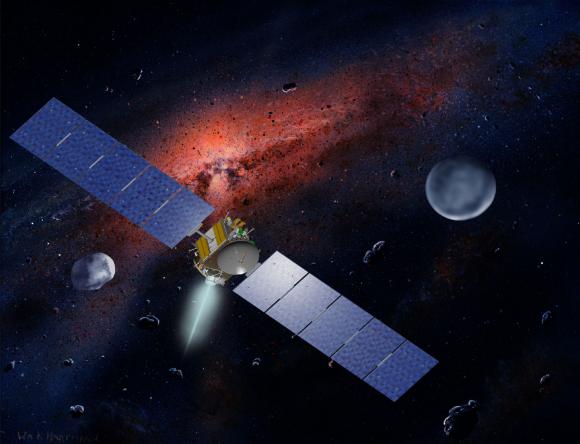Talk about delayed gratification: After nearly four years in flight and 1.7 billion miles traveled, a NASA spacecraft this weekend successfully entered the orbit of the giant asteroid Vesta. Brown University planetary geologist Carle Pieters, a co-investigator on the mission, scarcely could contain her excitement, calling the rendezvous “thrilling.”
“This first look at a protoplanet provides a feast of new geologic features that allows us to peer into the earliest period of solar system history,” she said. “With the suite of instruments on (the) Dawn (spacecraft), our goal is to understand the building blocks of the terrestrial planets. We're off to a great start!”
Dawn will study Vesta, one of the largest bodies in the belt of rubble between Mars and Jupiter, for a year before departing for another asteroid a dwarf planet named Ceres, in July 2012. Observations will provide unprecedented data to help scientists understand the earliest chapter of our solar system. The data also will help pave the way for future human space missions.
Dawn, which launched in September 2007, is on track to become the first spacecraft to orbit two solar system destinations beyond Earth.
Scientists want to study the asteroids because they never became full planets — their spurt to maturity inexplicably halted. By determining what happened, scientists hope to better understand how planets form and to learn more about what was happening in the early solar system when these bodies were created some 4.6 billion years ago.
The spacecraft will begin surveying Vesta next month from 1,700 miles away and will get as close as 110 miles above the surface. Besides a camera, it carries a spectrometer to map minerals, and a gamma ray and neutron detector to measure the chemical composition of the surface.
Pieters said she was especially interested in looking for thin layers of water molecules on Vesta’s surface, which has been suggested. In that hunt, she has special expertise: Pieters was the lead scientist in the blockbuster discovery, published in Science in fall 2009 that the moon’s surface harbors water molecules. Other discoveries involving Brown geologists have shown that the moon has water within its upper mantle and water ice at its poles.
“With Vesta, I don’t even want to guess what we should be looking for there,” Pieters said.
With its orbital insertion, Dawn became the first probe to enter orbit around an object in the main asteroid belt between Mars and Jupiter. The mission “marks a major scientific accomplishment and also points the way to the future destinations where people will travel in the coming years,” NASA Administrator Charles Bolden said in a statement. “President Obama has directed NASA to send astronauts to an asteroid by 2025, and Dawn is gathering crucial data that will inform that mission.”

